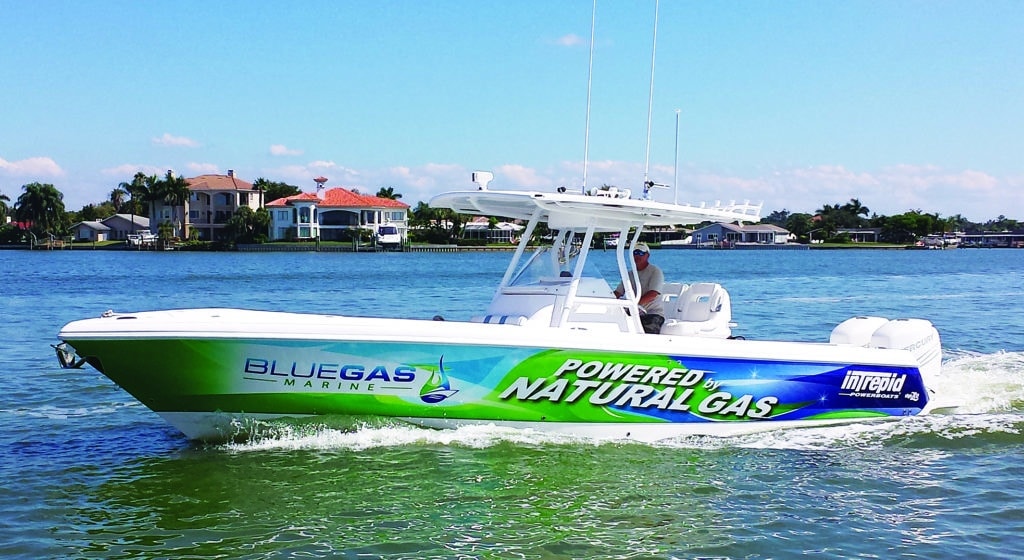
Join me as I peer into the future of fishing boats: The year is 2035. With dwindling crude-oil reserves, outcries over climate change and quantum leaps in battery technology, most cars and trucks are now electric.
Yet the limited range of electric propulsion renders it impractical for most boating anglers. With no recharging stations in the Gulf Stream, the internal-combustion engine remains the power of choice for saltwater fishing boats in the 2030s. However, with gas in the future priced at a premium, boats use an alternative fuel.
Forward-looking marine concerns envision this kind of scenario as they develop new fuel sources for boaters. No alternatives have proven totally viable yet, but let’s look at what’s underway, and at which fuels might power the sport-fishers of tomorrow.
Propane
Sold widely as liquid petroleum gas (LPG), this is the same fuel used in your backyard barbecue and many indoor forklifts. Though liquid when compressed, LPG turns gaseous at atmospheric pressure. Propane occurs as a by-product of two other processes, petroleum refining and natural gas processing, according to the U.S. Department of Energy (DOE). The lion’s share of LPG is produced in the United States.
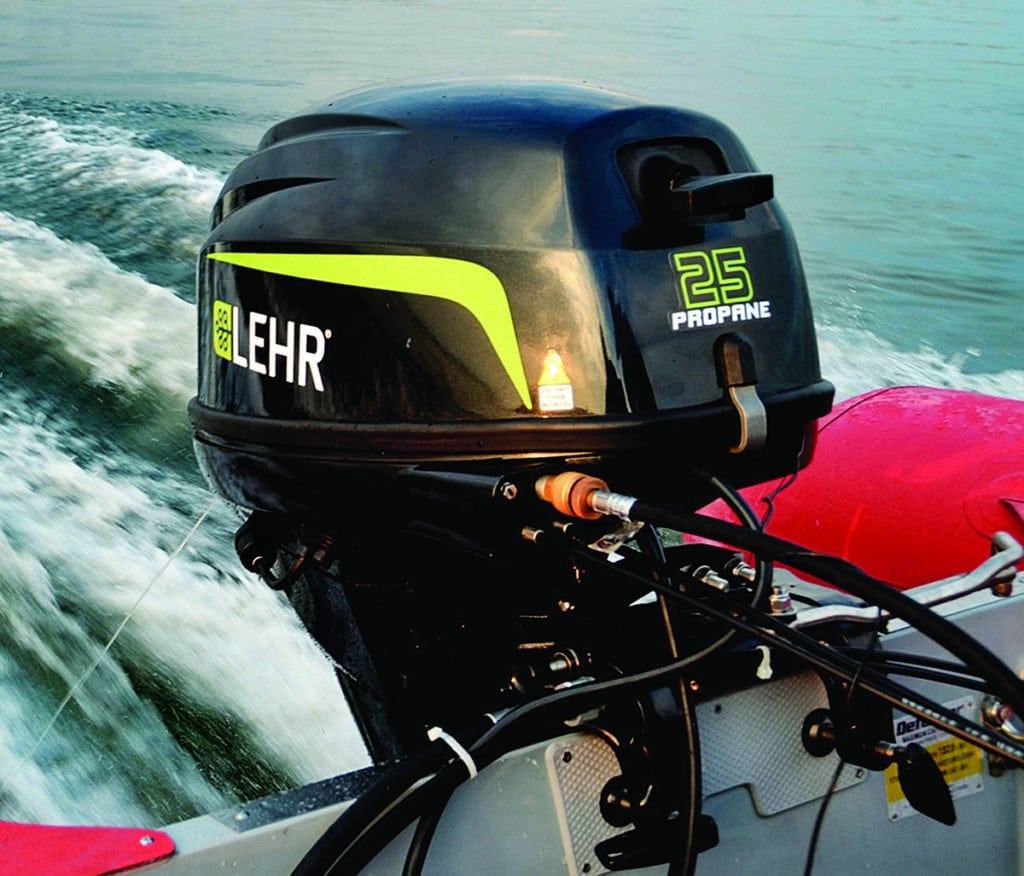
Leading the charge in advancing LPG as a marine fuel is Los Angeles-based Lehr which offers a wide range of propane-powered equipment, including a growing line of outboards, now up to 25 hp.
“Propane is the fuel of the future,” says Lehr founder and CEO Bernardo Herzer. “Lehr is committed to delivering the powerful, reliable and affordable engines that will take us there.”
LPG does not degrade over time and burns relatively cleanly. There are virtually zero evaporative emissions, and spilling fuel in the water is a nonissue. At 4.2 pounds per gallon, LPG is also 31 percent lighter than gasoline. “That means you can reduce a vessel’s loaded weight,” Herzer points out.
On the other hand, a gallon of LPG contains about 27 percent less energy than a gallon of gasoline, according to the DOE. At press time, the cost of propane ranged from $2.99 to $3.99 per gallon.
DOE statistics indicate that nearly 5 million U.S. homes — largely rural residences — rely on LPG for their primary heating fuel. Unlike natural gas, propane is often stored in an on-site tank. Delivery trucks maintain the supply to homes.
For a trailer-boater or waterfront resident, this opens up the possibility of refueling a propane-powered boat conveniently at home. A number of land-based filling stations, RV centers and other stores also offer LPG.
“In many ways, the refueling infrastructure is already in place,” says Herzer. “Once there’s a demand, I believe that fuel docks will quickly adapt to offer propane to boaters.”
Yet horsepower needs to grow substantially for saltwater anglers to take propane seriously. As power increases, boatbuilders might consider ways to integrate LPG fuel tanks and systems.
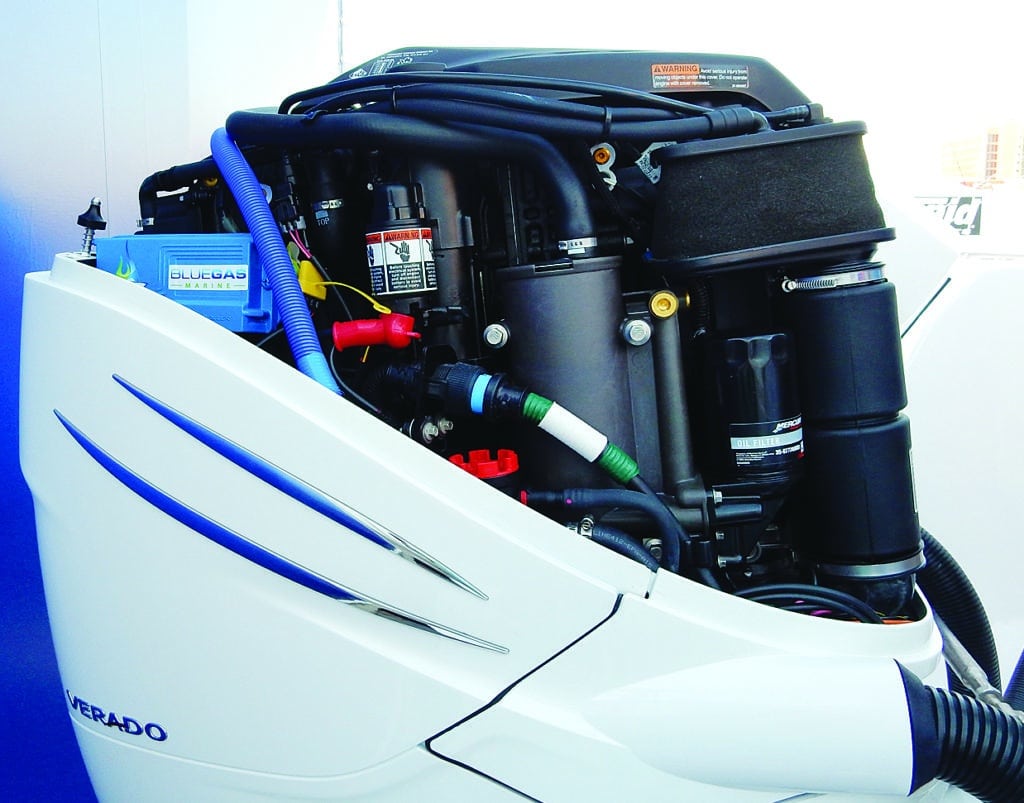
Natural Gas
This is the fuel of choice for millions of U.S. homes, and it’s used to power many modified diesel-engine buses to reduce pollution in crowded cities. Also known as methane gas, this fuel is extracted from the ground, often alongside crude oil. Refining helps purify the methane, separating it from elements such as hydrogen sulfide, moisture, butane, ethane and propane.
North Carolina-based Blue Gas Marine believes in this fuel so much that it has been touring coastal areas with an Intrepid 327 center-console fishing boat fueled by compressed natural gas (CNG), as well as gasoline, and propelled by twin Mercury 300 hp Verado outboards.
The CNG system consists of a fueling panel, fuel tanks, pressure regulator, and high- and low-pressure fuel lines. A modified engine electronic control unit, sensors and special injectors are also required. Retrofit systems are available for both Yamaha and Mercury outboards, and start at $6,000. The Intrepid’s fuel systems are independent of each other, offering the ability to switch fuels on the fly.
Like propane, CNG does not go bad in storage, and emissions are relatively clean, reducing air and water pollution by 70 percent, according to Blue Gas Marine. As with LPG, evaporative emissions and fuel spills are nil. The company doesn’t promote CNG as a replacement for gasoline, but rather as a reserve fuel. One gallon of CNG weighs just 1.07 pounds, versus 6.1 pounds for a gallon of gasoline. That sounds good until you realize you need a much greater volume of CNG to produce the same energy as a gallon of gasoline, a unit known as a gasoline gallon equivalent (GGE).
A GGE of CNG occupies 127 cubic feet, versus 0.13 cubic feet for a gallon of gasoline. On the plus side, the company holds out the promise of easy refueling for trailer-boaters and waterfront dwellers via fill-at-home compressors for residences equipped with natural-gas utility lines. While there are a smattering of CNG filling stations for automobiles, developing such capabilities at fuel docks seems unlikely in the near future. At press time, the cost of CNG ranged from $1.48 to $2.70 per GGE.
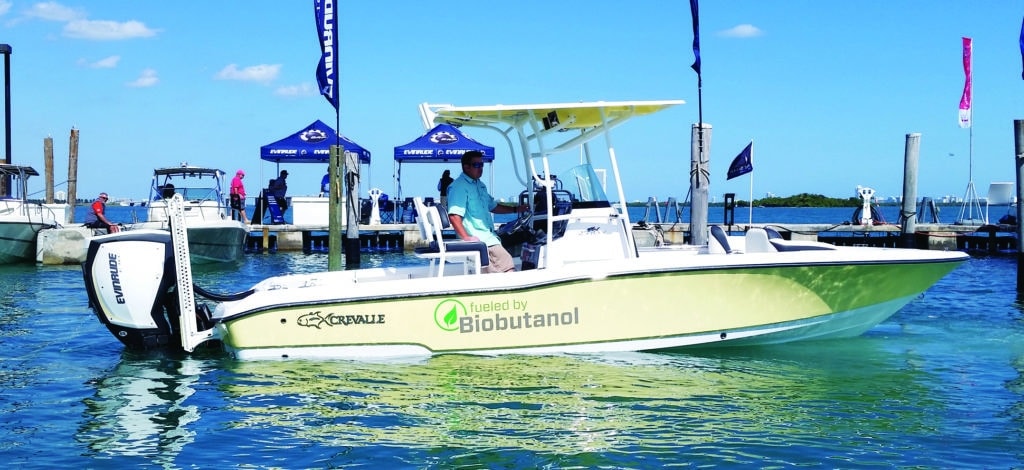
Biobutanol
Created in a fermentation and distilling process using renewable bio-matter, biobutanol holds promise as an alternative fuel for boating anglers, both in its pure form and when blended with gasoline.
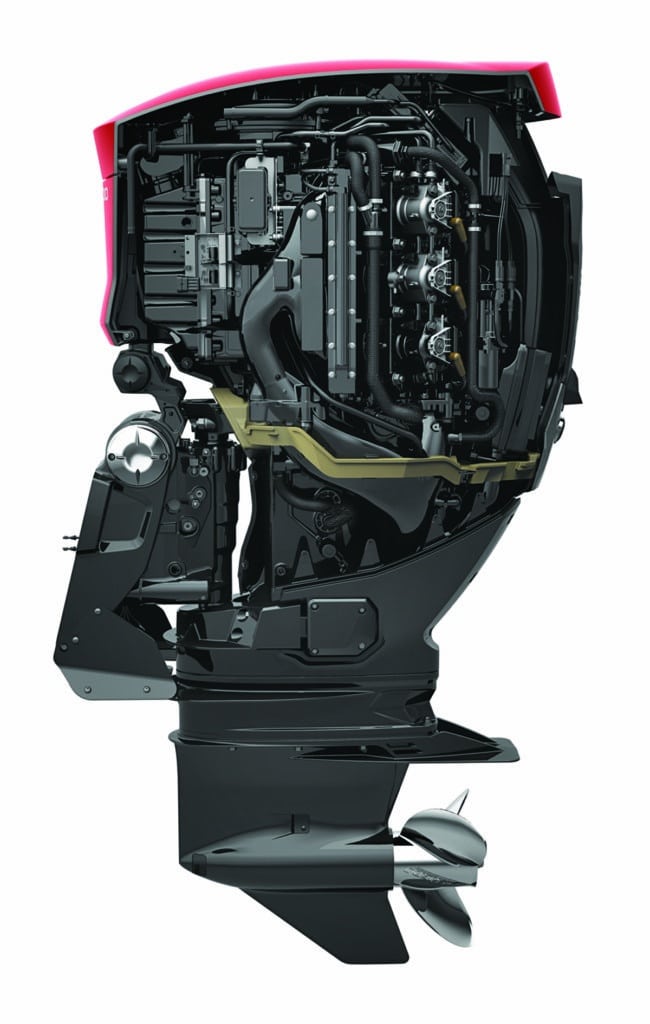
It might sound like ethanol, the dreaded fuel produced from corn. But biobutanol, on the other hand, can be produced with agricultural waste like crop residue and with some industrial waste, as well as corn.
More importantly, biobutanol appears to have none of the adverse side effects associated with ethanol, such as phase separation, according to tests conducted by the National Marine Manufacturers Association in conjunction with Evinrude Outboards.
The results of thousands of hours of testing indicate that biobutanol fuel blends are compatible with marine engines, according to Evinrude. There were no failures or performance issues in the testing, which included both two-stroke and four-stroke outboards, the company reported. Evinrude demonstrated the viability of this fuel blend at the 2015 Miami International Boat Show, using a Crevalle 25 bay boat powered by a 300 hp Evinrude E-Tec G2.
Pure biobutanol offers 90 percent of the energy content of gasoline, while biobutanol/gasoline blends (16.1 percent biobutanol) offer the same energy as E10 (10 percent ethanol) gasoline. Marine engines and boat fuel systems require no alterations to use biobutanol blends, according to Evinrude.
If and when wide-scale production of biobutanol ramps up, fuel docks should be able to quickly adapt, much as they have with biodiesel, a present-day alternative fuel.
No one really knows what lies ahead for boaters when it comes to fuel sources, but the good news is that marine companies are exploring and offering alternatives now, with the goal of keeping anglers on the water in 2035 and beyond.








